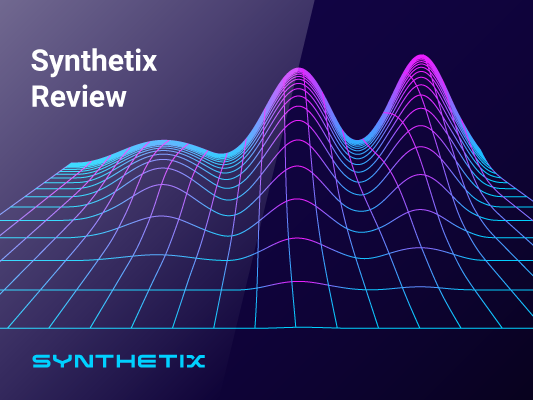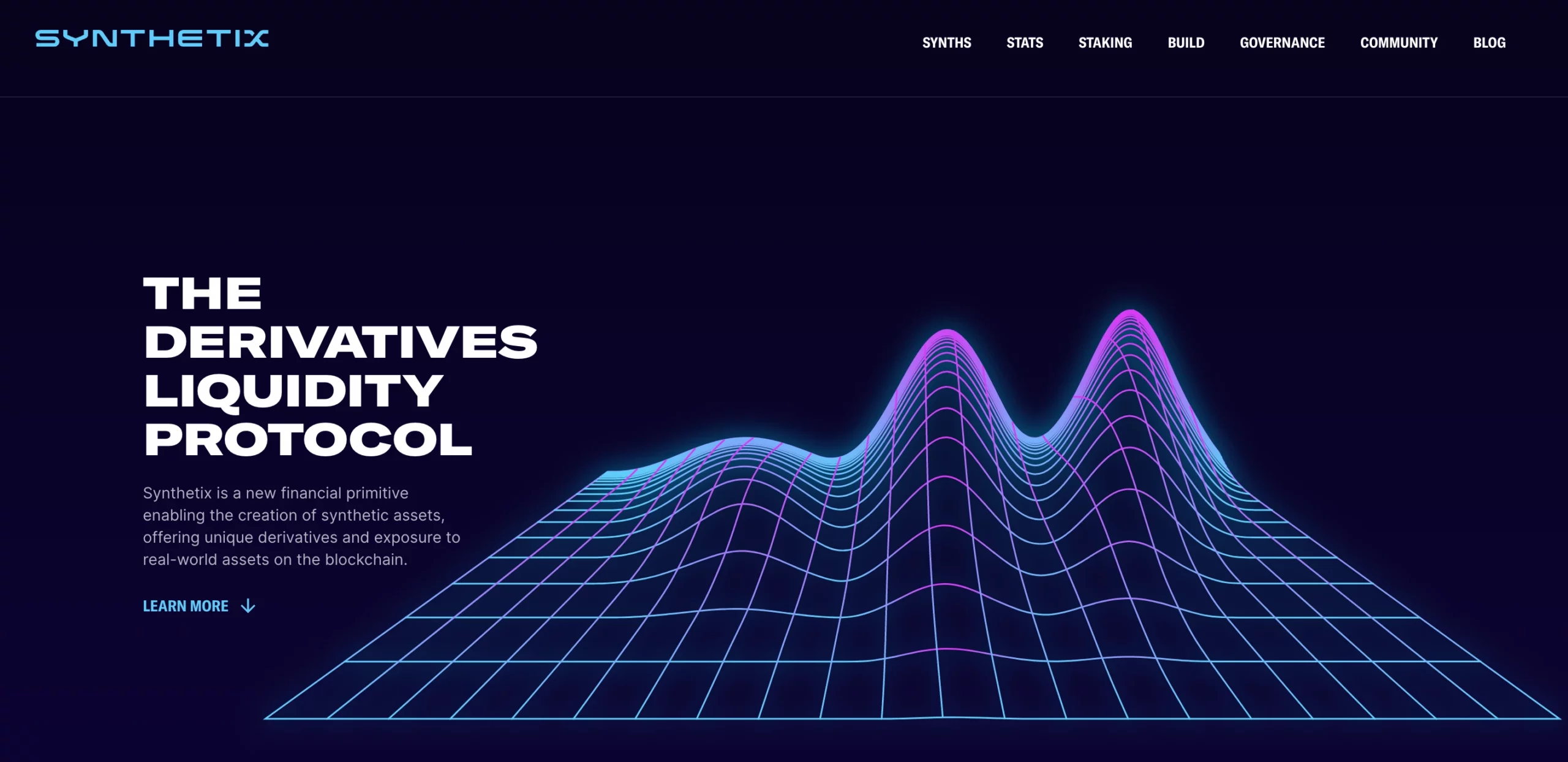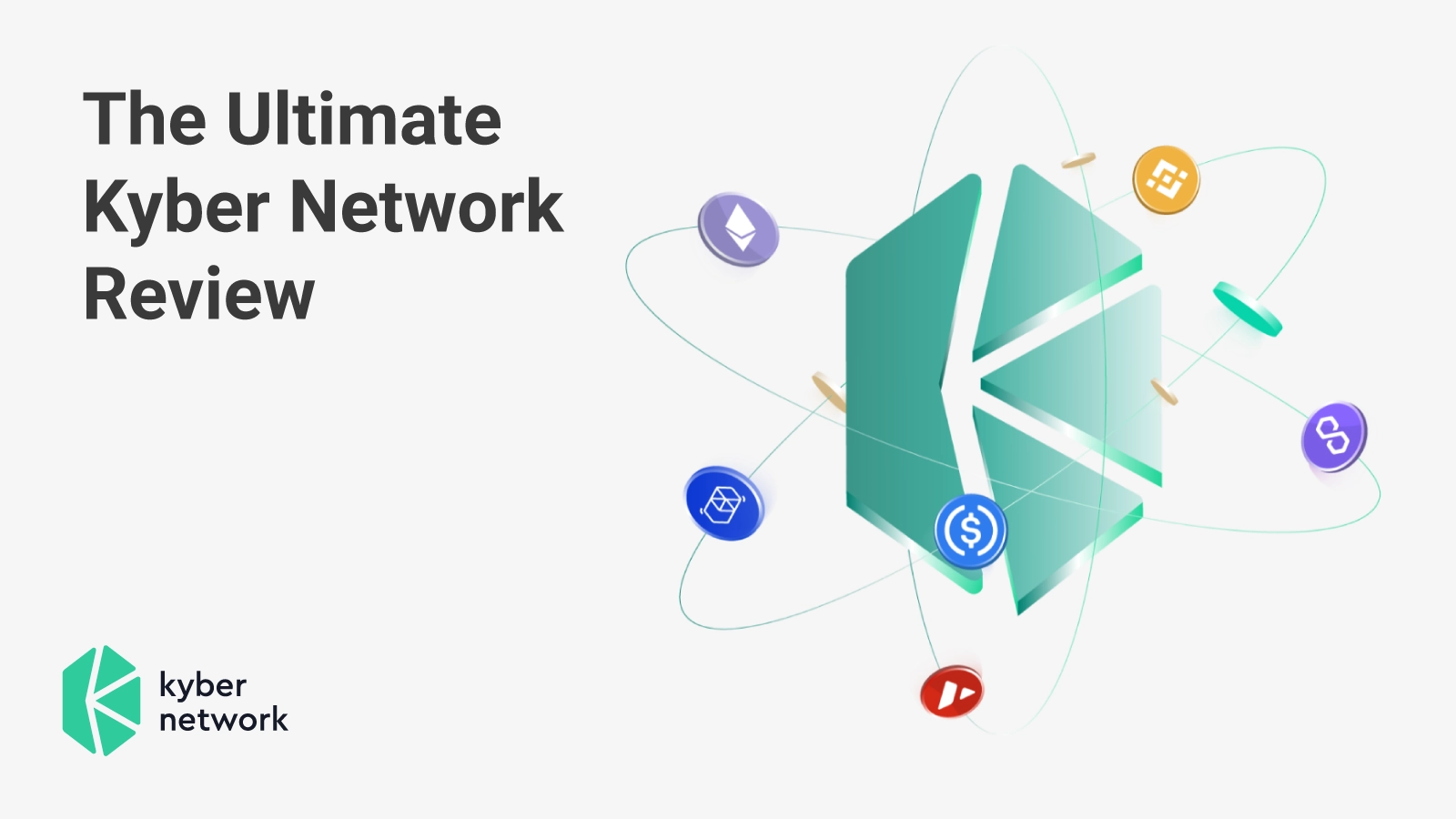
The Ultimate Synthetix App Review
Synthetix Pros
- Allows for trade and investments in multiple forms of assets
- Ease of use
- Multiple ways to make money off the platform
- Supports all the major hardware and software wallets
- Uses DeFi to remove middlemen and gives control to the common people
Synthetix Cons
- The number of assets tradeable is diverse but still very small
- Not for everyday retail investor or a newbie
- Since it is a new protocol, the risks associated with it are higher
- Being built on Ethereum, the high gas fee proves to be a big hindrance
- Still in its nascent stage and the future is unclear
2021 saw the crypto markets boom, with different sectors such as cryptocurrency tokens and projects flourishing and making financial services accessible to all. Blockchain technology has been at the pinnacle of the DeFi sector aiming to provide financial services to people directly without the need for any intermediaries such as banks and financial institutions. The Synthetix platform is one of the most unique innovations in the DeFi space.
Read on for our Synthetix review to learn everything you need to know about the Synthetix project, its pros and cons, and how to use the latest technological innovations to make the most of your investments and stay ahead of the curve.
Let’s dive right into it!
What Is Synthetix
DeFi has led to many innovations such as DeFi lending, borrowing, yield farming, flash loans, etc. Synthetix is among such innovations in the decentralized finance protocol that enables the issuance of synthetic assets on the Ethereum blockchain. What differentiates Synthetix from other traditional financial markets is the fact that users issue and trade synthetic assets backed by a real-world asset. These synthetic assets are called “Synths.”
Synthetix is a decentralized trading platform that enables users to trade assets. It includes trading stocks, cryptocurrencies, fiat currencies, and even commodities. Synthetix is a distributed asset issuance protocol that stores the assets over the blockchain in a decentralized manner. The price movements of the synthetic assets/synths are linked to the underlying asset price. Synths represent all the synthetic assets that users can trade on the platform. To understand how issuing and trading synthetic assets on the Synthetix exchange works, let’s take Bitcoin. Suppose a user wishes to trade in Bitcoin on Synthetix, then they can issue synthetic Bitcoin (sBTC) and trade synths on the Synthetix exchange.
History of Synthetix
Kain Warwick founded Synthetix exchange as the Havven Protocol in 2017. In 2018, the protocol raised around $30 million through the Initial Coin Offering of its native SNX token. In 2020, Synthetix exchange became decentralized and, in early 2021, US company stocks such as APPLE, TESLA, etc., were made available for trade on the platform.
When writing this article, the total value locked on the Synthetix platform is USD 567,538,306. This shows that the protocol is growing, and with new users and investors entering the decentralized space with each passing year, its potential for growth is immense.
How Does Synthetix Exchange Work
Synthetix operates on the Ethereum blockchain and has two tokens, namely:
- Synthetix SNX tokens: SNX is the main token on the Synthetix network and is used to generate synthetic assets. Synths are collateralized by the Synthetix Network Token (SNX) to drive value and liquidity to the underlying assets.
- Synth token: Synth is the second token of the platform and is the synthetic asset created using SNX tokens.
The platform uses a decentralized Synthetix oracle that provides real-time price information for the real-world assets being traded on the platform. The oracle allows crypto investors to hold Synths and thereby access real-world assets such as gold and silver, previously unavailable for trading.
How to Get Started on the Synthetix Ecosystem

To get started on Synthetix, a user needs to purchase SNX tokens and lock them in a compatible wallet. You can buy Synthetix tokens on various centralized and decentralized exchanges for small exchange fees. Some of the most famous exchanges where you can trade SNX are Binance, Huobi Global, Coinbase, Kucoin, Uniswap, SushiSwap, Gate.io, Kraken, etc. Once you’ve bought the desired amount of SNX tokens, the next step is to choose the most compatible wallet to store your tokens. The list of wallets compatible with Synthetix exchange is pretty diverse, ranging from Metamask, Trezor, Tally, Ledger, Coinbase Wallet, etc.
Users can create multiple types of assets and Synths. For example, if a user creates a Synth of Ethereum (ETH) called sETH, then it tracks the price of ETH in real-time. The user can also create an inverse synth for ETH called iETH that tracks the decrease in the price of ETH. The value of iETH goes up as the price of ETH goes down. This could be understood as being similar to shorting ETH but on a much smaller scale and with much lesser risk. The exchange works on the Peer-to-Contract mechanism based on smart contracts that execute automatically when the specific conditions are met. Like with any other DeFi project, smart contracts form the backbone of Synthetix.
Users can also stake SNX to create new Synths using their Mintr DApp. Those who create Synth are considered stakers in the system, earning them staking rewards. These rewards are determined by the amount of SNX that is locked and the trading fees generated by the Synthetix exchange. On Synthetix, all of the Synths created through staking SNX tokens are backed by 750% collateralization ratios. SNX holders have to manually manage their ratio on Mintr through minting sUSD if it is too high – or burning sUSD if it’s too low. Users can use the minted SNX tokens or staking rewards to trade, invest, transact, etc. The system generates new Synths based on the transaction fees paid by users. Users wishing to earn interest on their SNX tokens can deposit them on Uniswap, Curve, or any other Ethereum based DeFi application. They can simply use ETH in their wallets (to pay transactions fee/gas fees and cost of Synth) and buy Synth tokens by first buying sUSD.
Keeping Synthetix Stable
One of the key challenges when it comes to trading synthetic assets pegged to real-world assets is to maintain a stable peg, allowing the system to remain stable, ensure good liquidity, and function well. For example, the price of USD and sUSD might change due to external factors such as a rise in the price of USD valuation. To ensure that the Synth peg is maintained, Synthetix employs three different mechanisms, namely, Arbitrage, sETH Liquidity Pool on Uniswap, and SNX Arbitrage Contract. All these methods are discussed below:
- Arbitrage: The minting of Synth by stakers results in the creation of debt which can then be arbitraged. When the peg for a Synth is broken, the stakers of SNX can arbitrage the debt and buy sUSD at lower prices to reduce their debts and keep the peg stable.
- sETH Liquidity pool on Uniswap: Whenever new SNX is minted, part of it is distributed amongst users who provide liquidity to the sETH/ETH pool on Uniswap. This provides one of the largest liquidity pools available in the market and allows users to buy and sell huge amounts of Synth at any time, thereby keeping the peg stable.
- SNX Arbitrage Contract: If sETH/ETH peg falls below par, there is a contract in place that sends SNX to the contract automatically. The contract allows users to exchange ETH for SNX at a discounted price anytime the ratio of sETH falls below par.
Assets Tradeable on Synthetix
Synthetix brings the best of the real-world assets, traditional financial markets, blockchain technology, and cryptocurrencies together. It enables trading in the following assets:
- Synthetic Fiat Currencies: Real-world assets such as USD, GBP, etc., can be traded on the platform in the form of synthetic assets like sUSD, sGBP, etc. The platform allows to track these assets’ real-time prices and trade them.
- Cryptocurrencies: The platform uses synthetic oracles to track the cryptocurrencies’ prices and the Synthetix or the Chainlink oracle to track the assets’ prices.
- Inverse Synths: When a user wishes to short a Synth for the asset they trade, they can create an inverse synth (iSynth). The inverse Synths track the fall in cryptocurrencies’ prices or the indexes underlying them. For example, a Synth for BTC is sBTC, while the iSynth is iBTC.
- Commodities: Real-world commodities such as gold, silver, etc., can also be created and traded.
- Stocks: Users can trade conventional stocks and equities such as TESLA, META, GOOGLE, etc., on Synthetix by creating their Synths.
As we can see, Synthetix provides users the freedom to trade in all Synthetic assets available on the platform without the hassles of the traditional financial system. The contracts on the Synthetix network are executed automatically, and the system provides multiple trading options to users. Users can create as many different Synths as they want and convert them to other synthetic assets.
Features of Synthetix
The platform comes with multiple features such as:
- 750% Collateralization:
The system requires a 750% collateralization to create Synths. This means to create Synths for USD 100; the user needs to collateralize SNX tokens worth USD 750. Such large collateral protects users from sudden market movements and provides excess liquidity. The staking rewards are also distributed only amongst users who maintain the minimum collateral of 750%. - Debt-driven System:
The collateralized SNX tokens are locked up. By locking SNX tokens, the system creates a debt on the user, which can be unlocked by burning Synths equal to the debt. - Debt Pool:
The user’s debt increases when they mint more Synths, creating a global debt pool underlying the Synthetix ecosystem. This enables the Synthetix ecosystem to have infinite liquidity. - Synthetix Exchange:
The Synths created by users can be traded on the exchange for a minimal trading fee of 0.3 %. The exchange works on smart contracts, and the transactions are automatically completed when the underlying conditions in the contracts are met. Fees generated by users go back to the SNX stakers as a staking reward. This is done to incentivize SNX stakers to provide higher collateral. - Inflation Hedge: The creators of the Synthetix protocol have taken inflation into consideration as well, and, as a result, the total SNX supply will increase from the initial 100 million to 250 million by 2025. Synthetix creates an incentive for users to mint new Synths even with inflation as the increase in the total supply of SNX would be distributed amongst them.
Now that we have covered all the basics of the Synthetix protocol and the features that make it so lucrative, it’s time to look into some of the challenges it faces.
Challenges
Synthetix is one of the most exciting DeFi projects that applies the Ethereum smart contract technology like no other protocol. However, the Synthetix project is still in its nascent stage, and the developers are still working on removing the hurdles in its way. For example, the high collateralization requirement for mining new Synth is an issue, which keeps the small users away from the Synthetix network. Another issue is the limited number of assets on Synthetix. As it’s very difficult to track the prices of all the stocks, commodities, etc., available globally, Synthetix only allows a small number of assets from each category to be tracked, and minting Synths are only created for them.
Another major hindrance is the high Ethereum gas fees and Synthetix’s centralization. The regulatory policies may also impact Synthetix in future.
Conclusion
In conclusion, Synthetix is one of the most exciting products in the decentralized financial market. It offers synthetic assets to users worldwide, providing access to specialized trading strategies. Synthetix allows users to bet on crypto assets, stocks, precious metals, etc., in the form of ERC20 tokens. Synths copy the price of an asset in the real world and bring it onto the Ethereum blockchain giving that Synth all the properties of an ERC20 token.
The flexibility of Synth exchange allows for a whole new world of potential trading strategies. While it’s still in its nascent stage, it has the potential to create a massive tokenized market of digitized real-world assets on the Ethereum Blockchain.
The team behind the protocol has the right vision and aims to bridge the gap between the traditional financial markets and DeFi. The Synthetix protocol uses the power of DeFi and blockchain technology to let users trade in real-world assets such as Forex, Commodities. etc., without the control of financial intermediaries.
However, there is a significant risk involved with the Synthetix system, especially for those who have staked SNX, and you should only trade what you are willing to lose.
This content and any information contained therein is being provided to you for informational purposes only, does not constitute a recommendation by CoinStats to buy, sell, or hold any security, financial product, or instrument referenced in the content, and does not constitute investment advice, financial advice, trading advice, or any other kind of advice.






